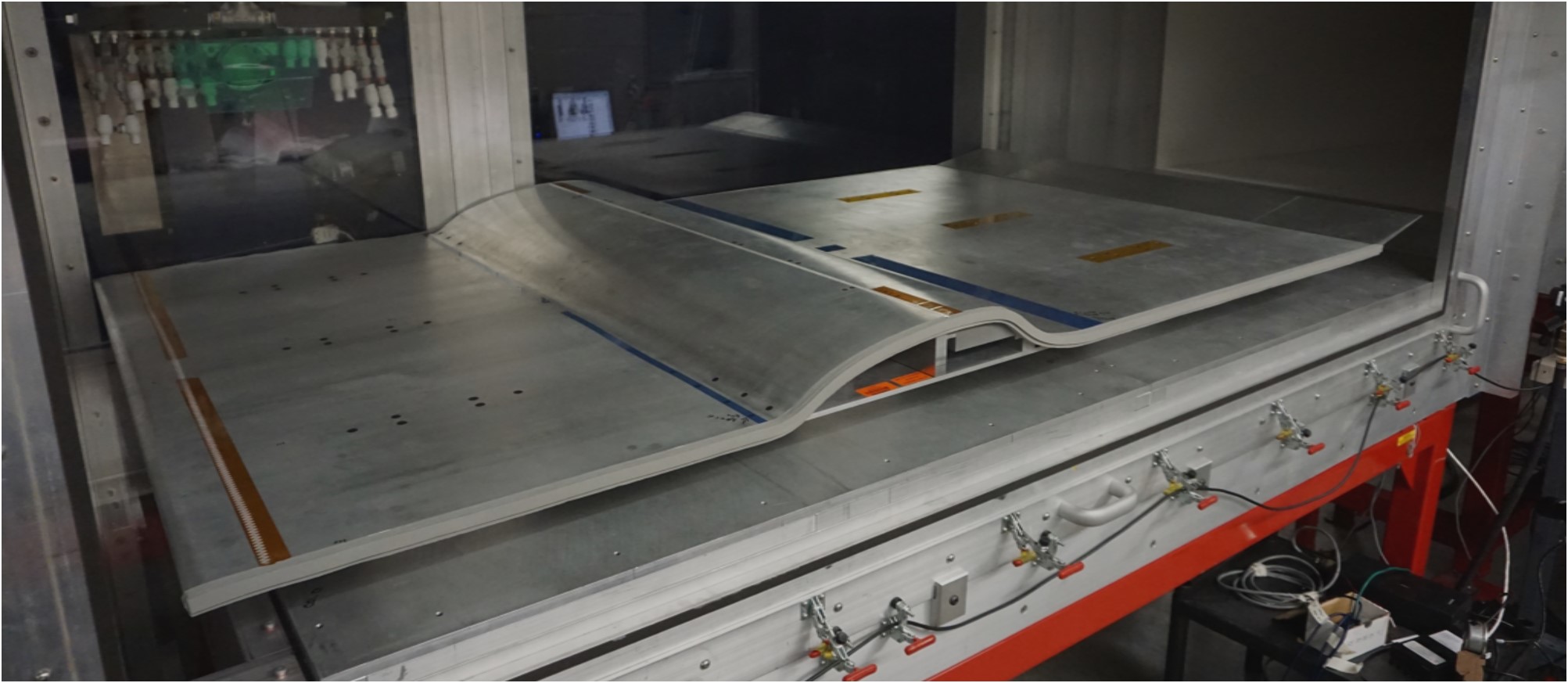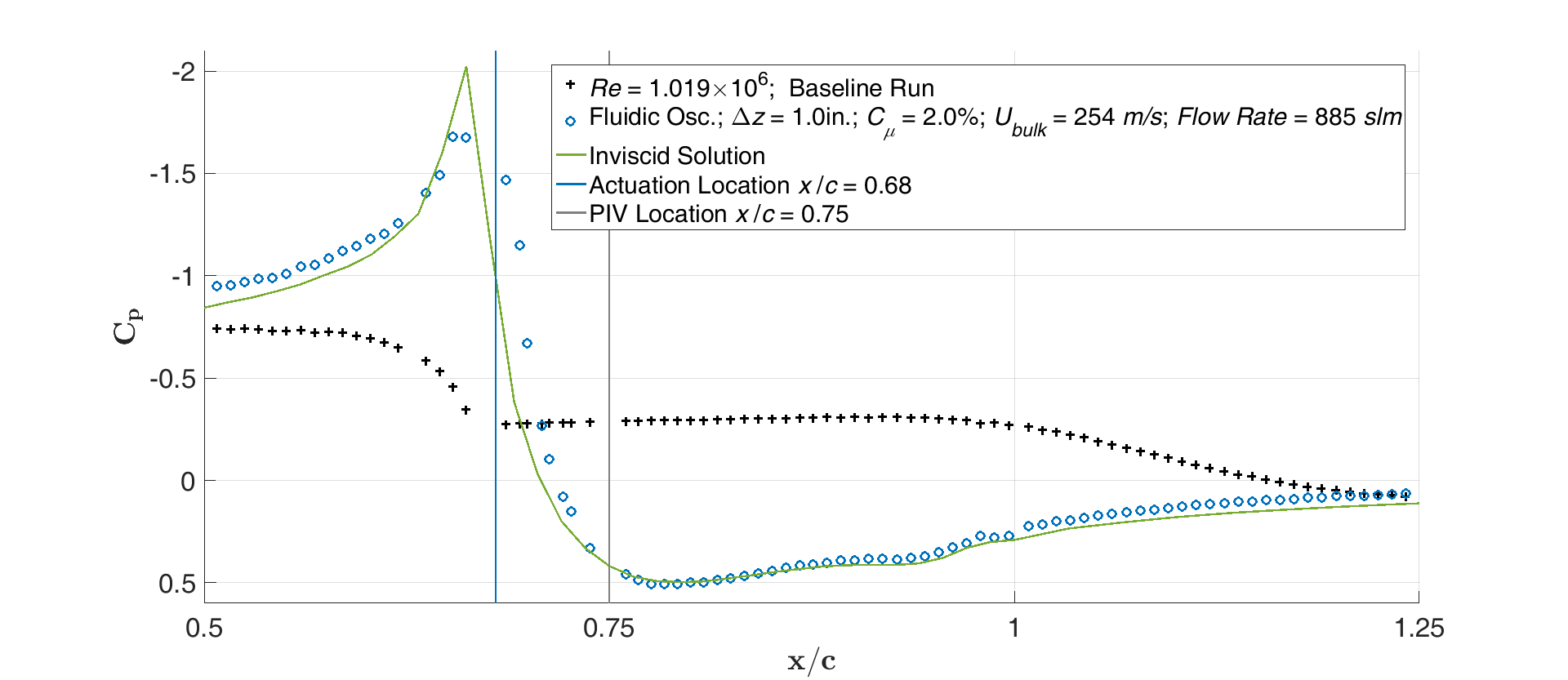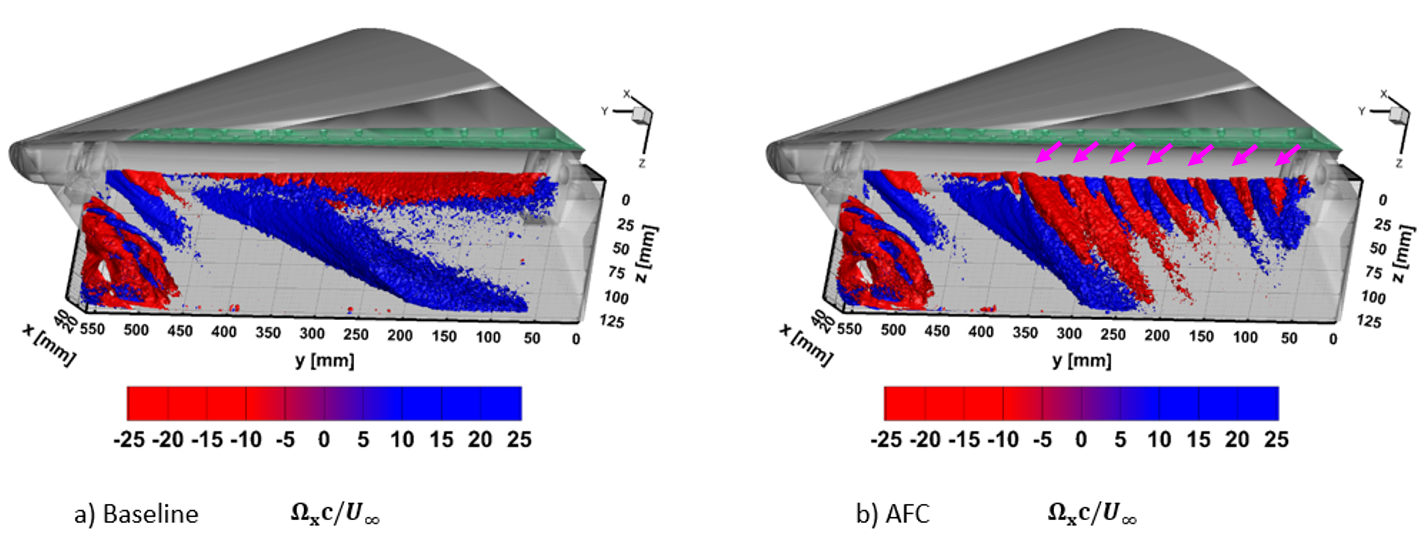Coupled Studies of Flow Physics and Flow Control
Spatially Distributed Forcing Mechanisms for Control of Flow Separation
Spatially distributed forcing (both steady and unsteady) has shown significant capability for controlling flow separation through production of both streamwise and spanwise vorticity along with direct momentum injection and freestream entrainment. However, the detailed physics of this interaction and how to best leverage it for separation control remain unclear. This research aims to clarify these mechanisms through experimental studies of three dimensional forcing on a wall-mounted hump using various actuation techniques.


Figure: Time averaged pressure coefficient of baseline and control using fluidic oscillators along with inviscid solution for reference (Re = 1.0 x 106, U∞ = 30 m/s, c = 22 in).

Figure: Time averaged normalized streamwise vorticity (ωx c)/U∞ acquired downstream of unsteady forcing with fluidic oscillators (Cμ=2%) at x/c = 0.75 (Re = 1.0 x 106, U∞ = 30 m/s, c = 22 in). Squares depict active actuator nozzles and arrows show chordwise pressure tap locations.
Christopher Otto, Philipp Tewes, Jesse C. Little, and Rene Woszidlo. "Comparison of Fluidic Oscillators and Steady Jets for Separation Control on a Wall-Mounted Hump", 2018 AIAA Aerospace Sciences Meeting, AIAA SciTech Forum, (AIAA 2018-1281). https://doi.org/10.2514/6.2018-1281.
Plasma-enabled Unsteady Aerodynamics
Vortex body interaction (VBI) is prevalent in many applications including rotorcraft, turbomachinery and fixed wing flight in unsteady environments (e.g. formation flight and UAVs in low altitude and/or urban settings). Experimentally generating a vortex or train of vortices that approximates flight conditions is nontrivial. The TFCL uses plasma actuators to enable VBI studies for conditions that are not realizable using traditional mechanical based disturbance generators.


Active Flow Control on Generic Combat Wings
The fundamentals of boundary layer separation control have been largely established based on 2D geometries. This research examines the problem for generic combat wing planforms having more complex planforms and cross-sections. The project is particularly concerned with high-lift generation in aircraft carrier approach conditions. The TFCL investigates flow physics and control on such geometries using sweeping jet actuators in collaboration with the Aerodynamics Laboratory at the University of Arizona (Prof. Israel Wygnanski).

Figure: Comparison of ISO-surfaces of the normalized voticity component Ωx for Ωxc/U∞ = ± 25 for a) baseline b) AFC (Cμ = 1%) for α = 0°, δF = 55°, U∞ = 30 m/s.
Konstantin Genschow, Philipp Tewes, Jesse C. Little, and Israel J. Wygnanski. "A PIV Study of Baseline and Controlled Flow over a Highly Deflected Flap of a Generic Trapezoidal Wing", 2018 AIAA Aerospace Sciences Meeting, AIAA SciTech Forum, (AIAA 2018-1801). https://doi.org/10.2514/6.2018-1801.
